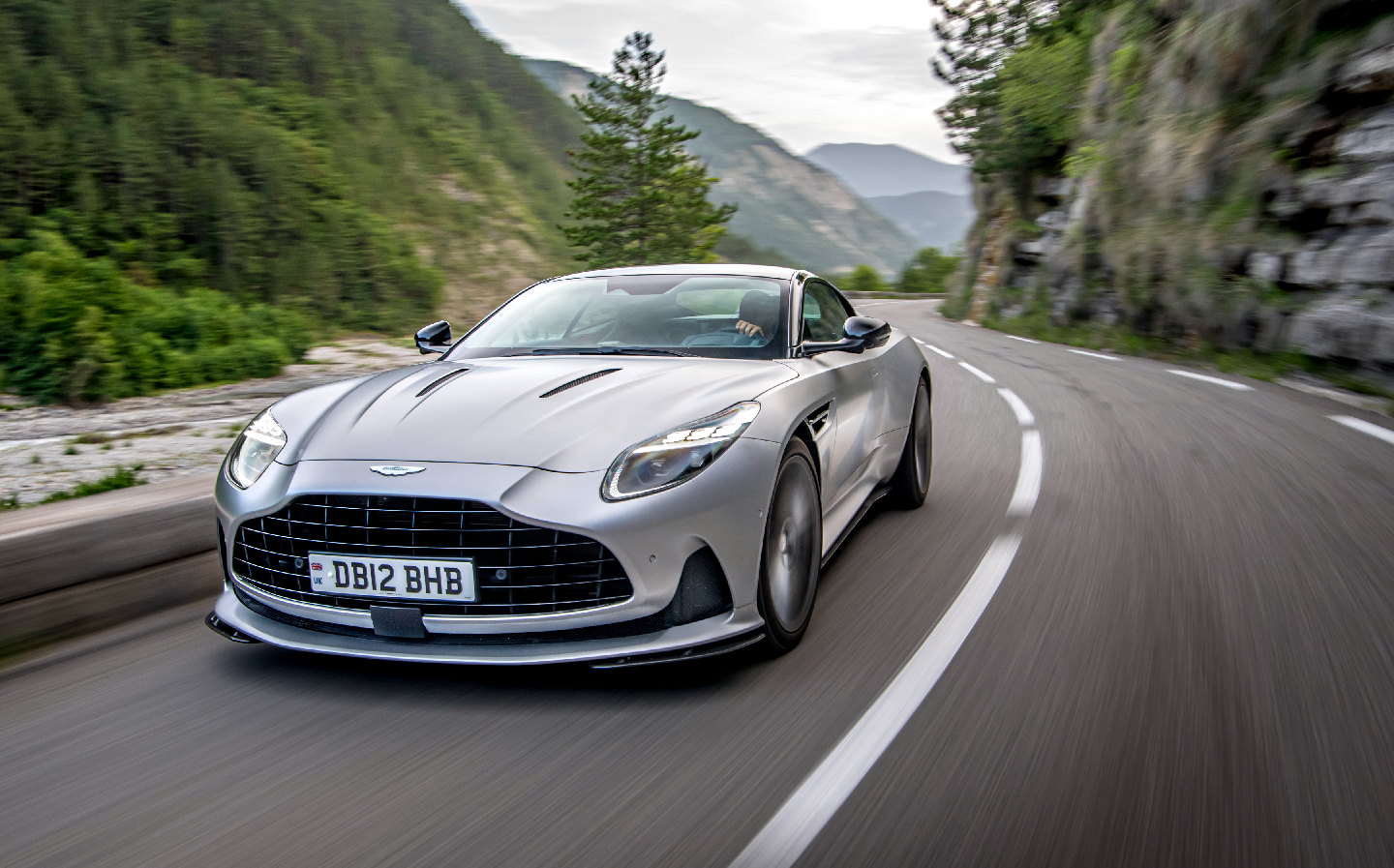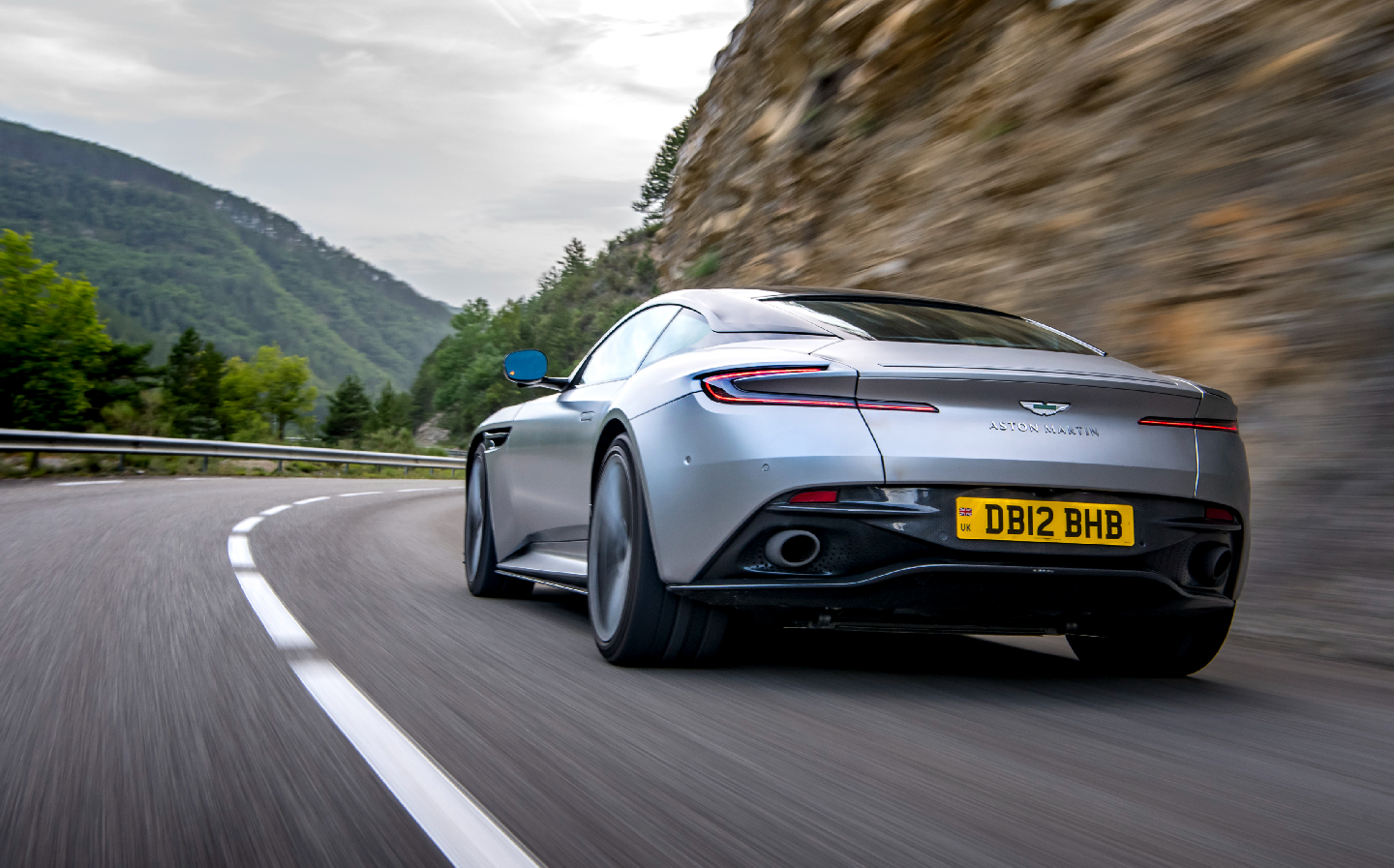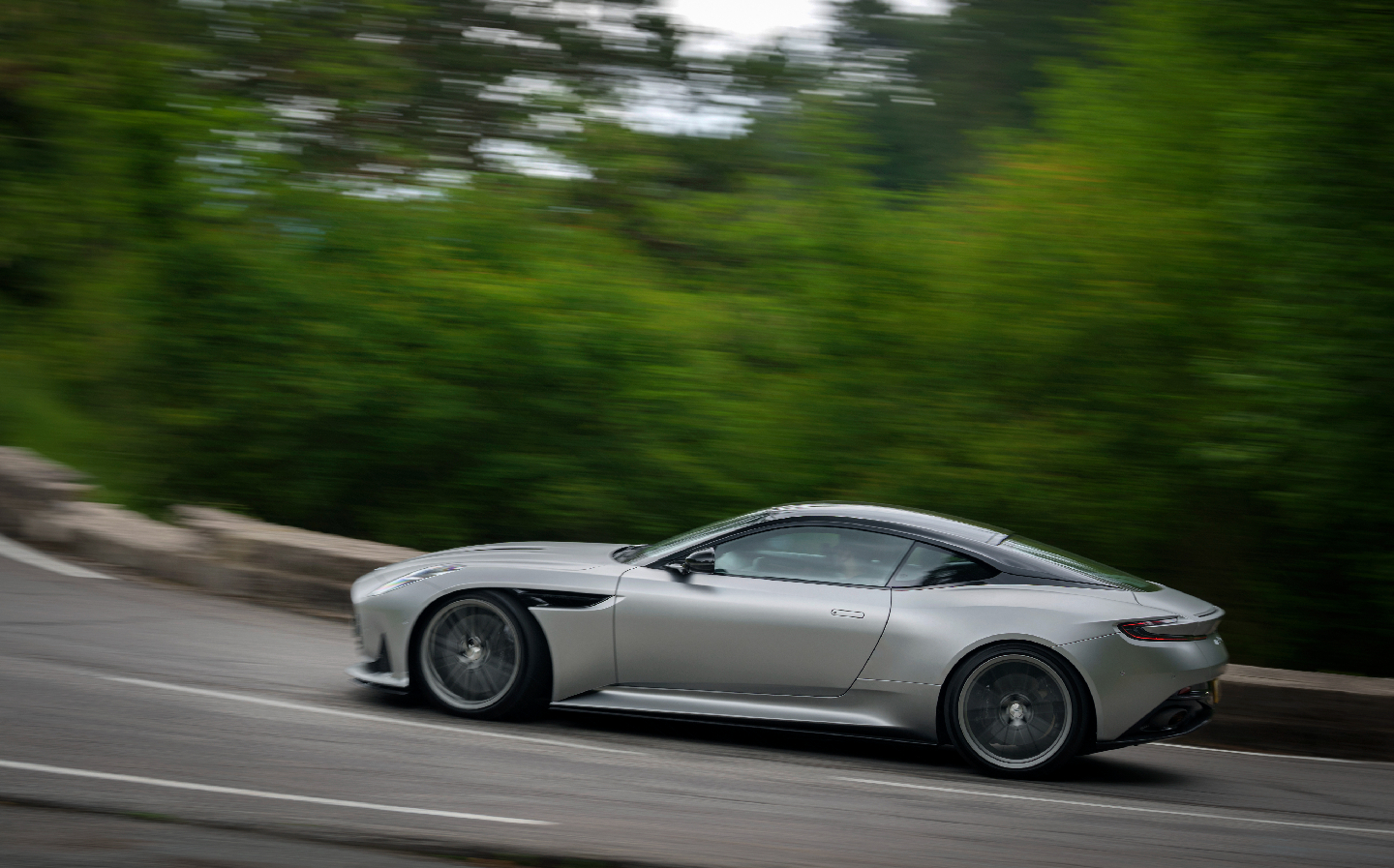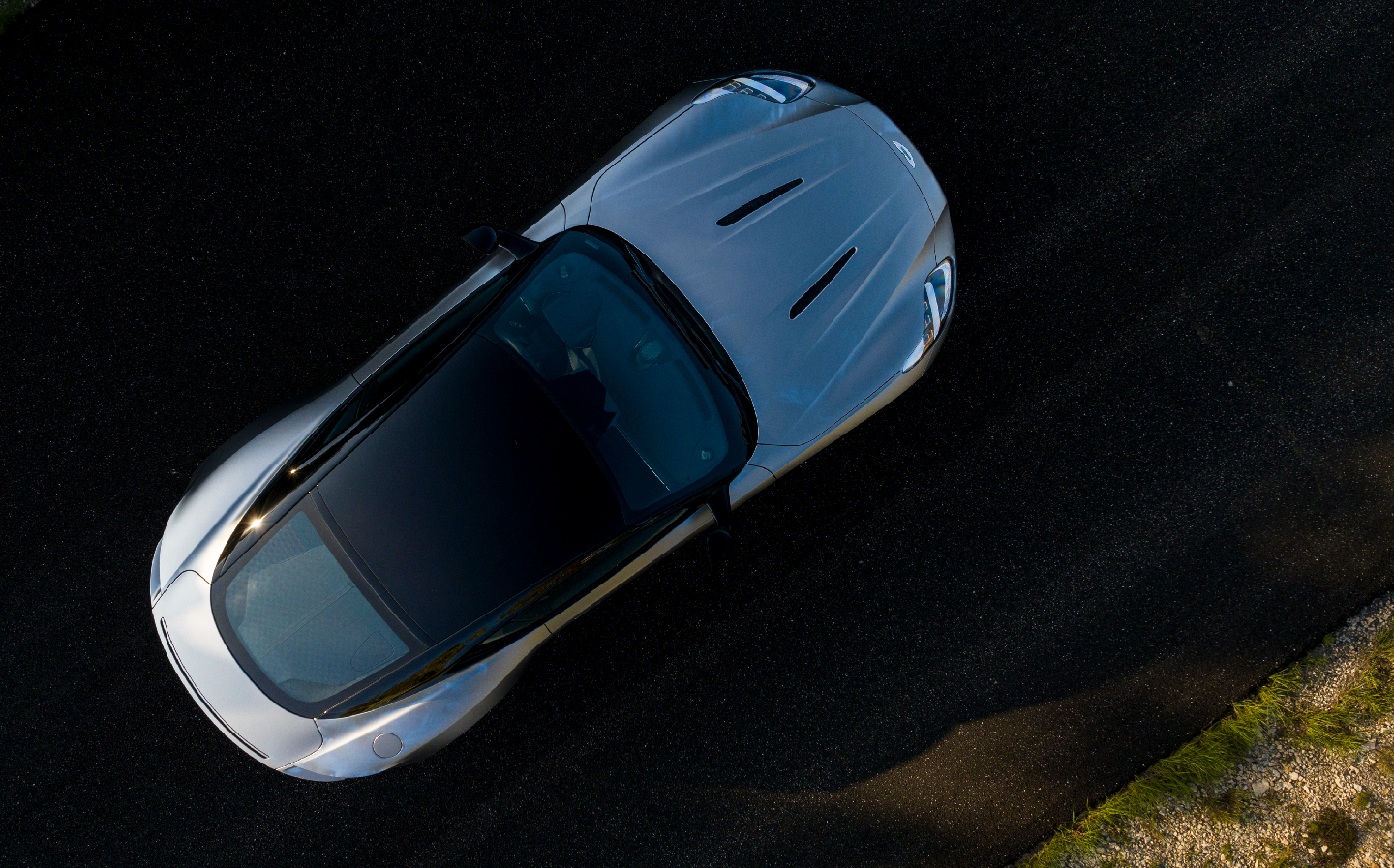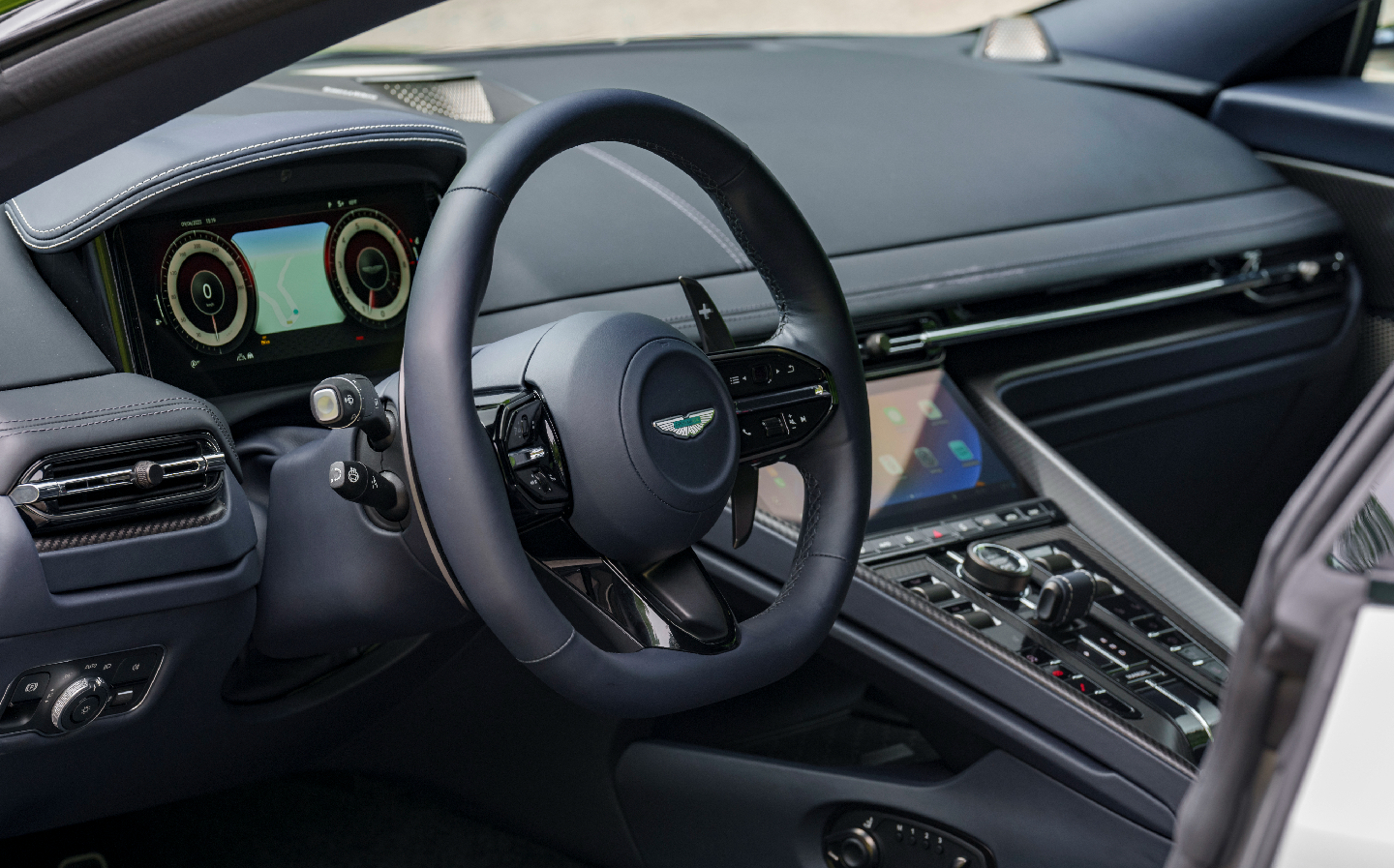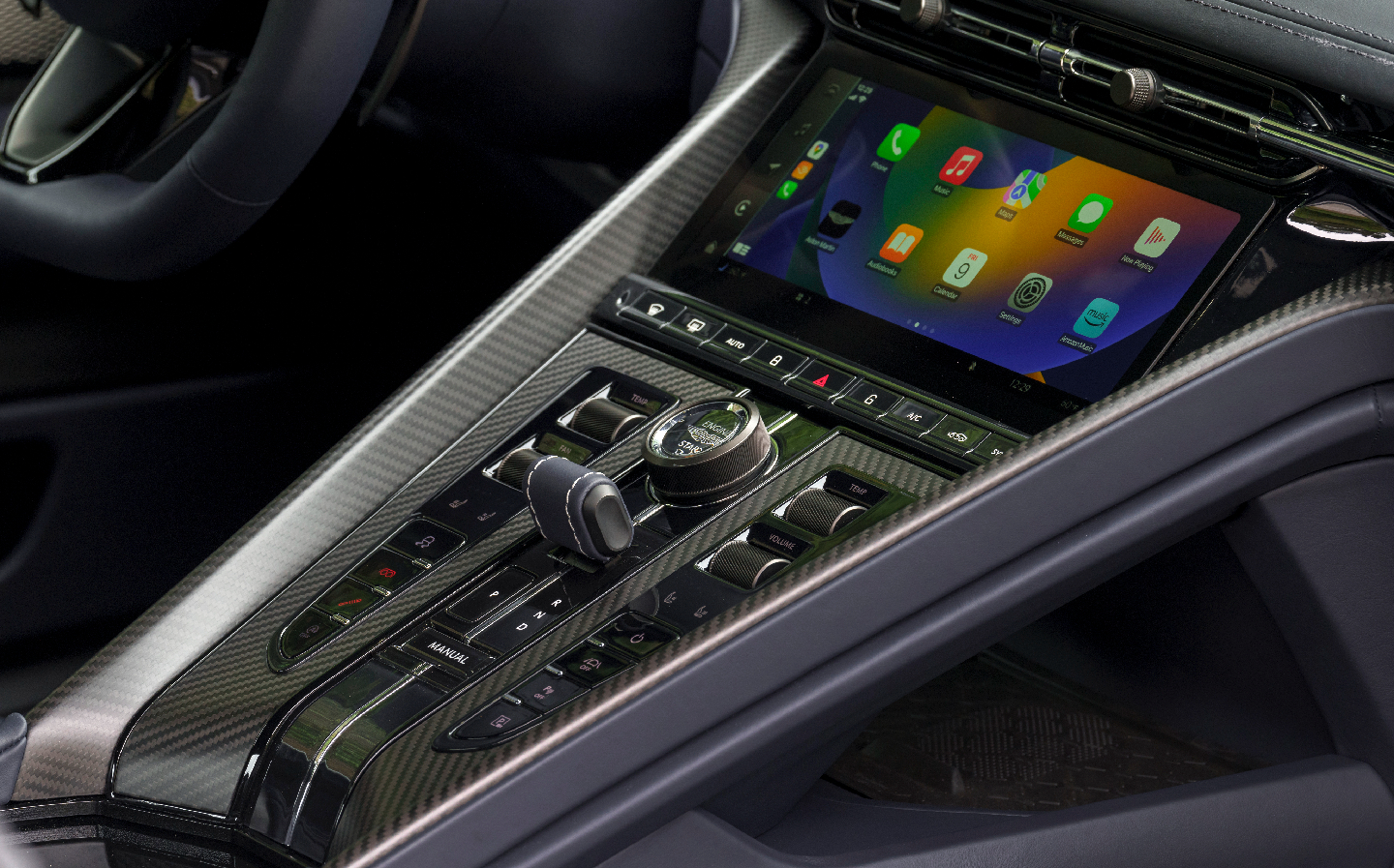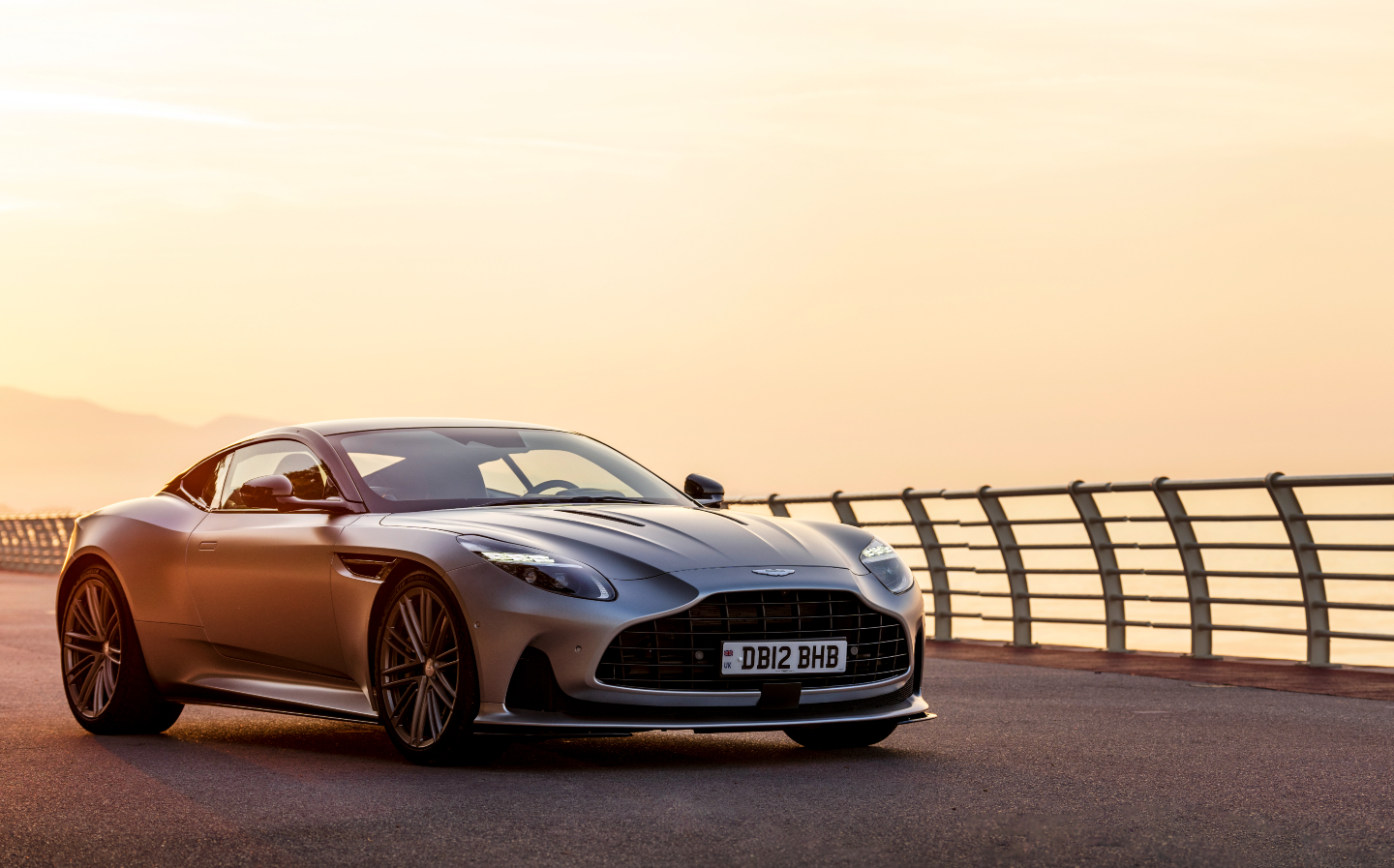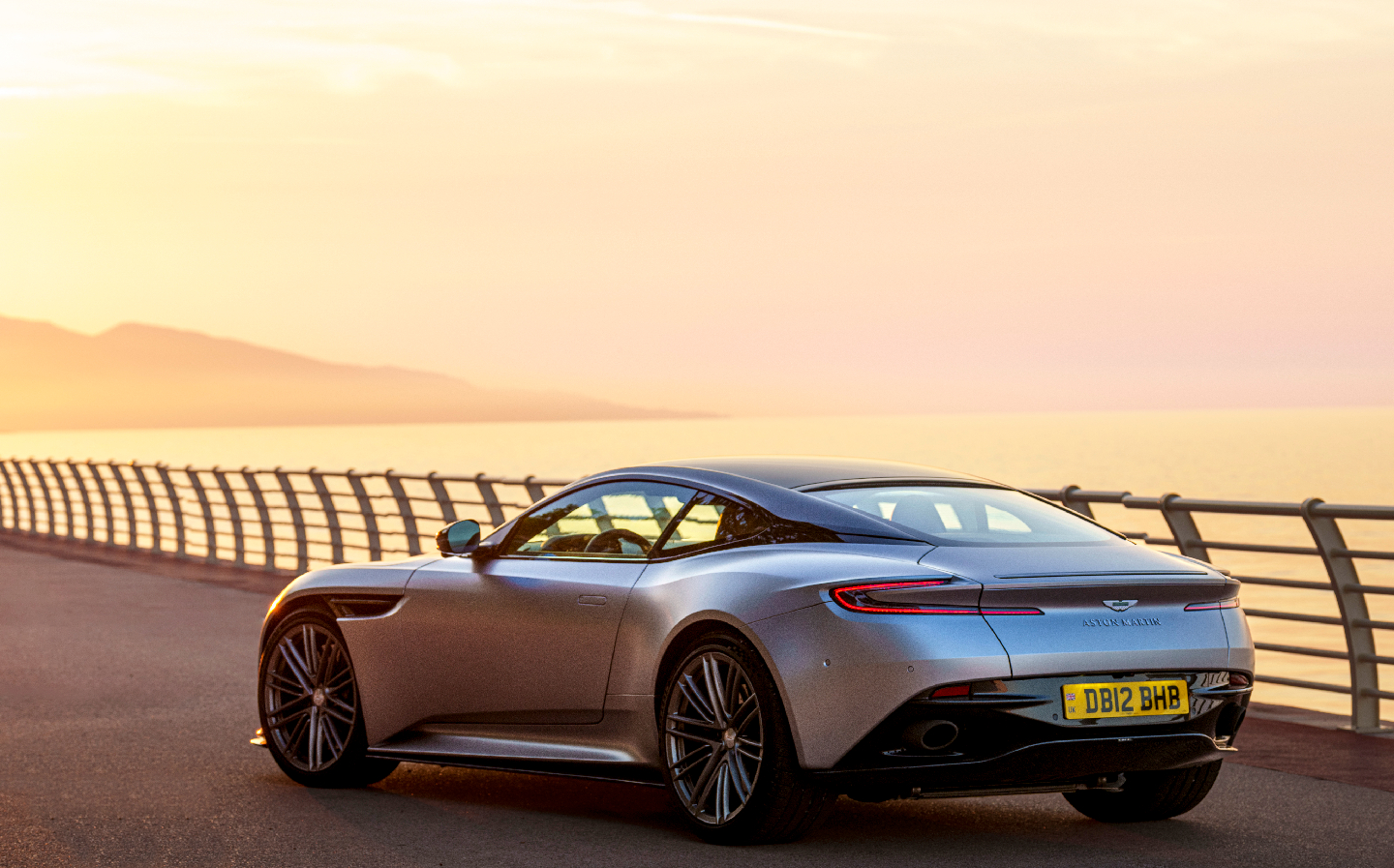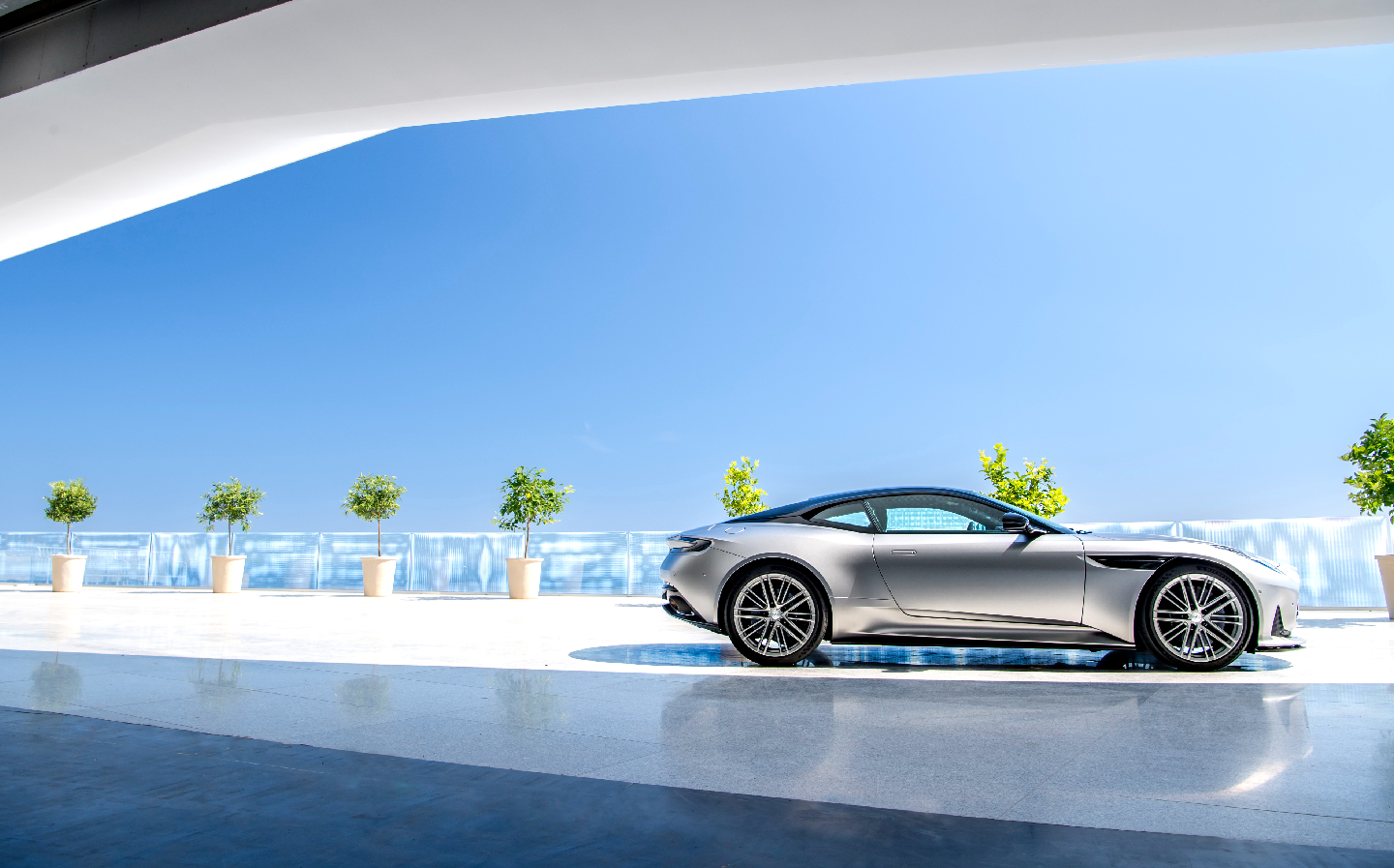Aston Martin DB12 review: Much more than a facelift
It's not a grand tourer... it's a 'super tourer' (apparently)
You have to admire Aston Martin’s resilience. It’s a company seemingly perpetually in financial turmoil but its takeover a few years ago by Canadian billionaire Lawrence Stroll breathed new life into the brand.
He pushed through the launch of an SUV – the DBX – which has helped keep the wolves from the door by becoming Aston’s instant best seller – and most profitable model.
Meanwhile, Geely, the conglomerate that owns Lotus, Volvo and Polestar, has been trying to muscle its way in for years and Stroll recently allowed the Chinese behemoth to double its stake in Aston Martin, which should be good news in terms of technology sharing (though potentially bad news for anyone concerned about human rights and fair competition).
Effectively, then, Aston is entering a new era — one in which it is potentially no longer considered rolling towards administration — and the DB12 is the figurehead of that rejuvenation, we’re told.
Yes, it looks much like an Aston Martin of old on the outside but take a look at the inside and you’ll notice Aston is no longer fitting technology and parts rummaged from a bin round the back of a Mercedes factory.
What’s more, the company claims some of most significant advances come under the skin, with a much more powerful V8 engine than found in the DB11, updates to the drivetrain, new active suspension damping and stability control, and an electronic differential for the driven rear wheels.
In fact, Aston claims the DB12 is 80 per cent new, and that every aspect of the flagship grand tourer is best in class. No series production Aston Martin has “dedicated itself so completely to setting new dynamic benchmarks,” we were told. As a result, apparently the DB12 is not a grand tourer at all; it’s a “Super Tourer”.
Of course that all sounds like marketing speak but we were, in the end, suitably impressed. Read on for our in-depth Aston Martin DB12 review.
Design and rivals

Okay, the DB12 doesn’t win any awards for design innovation — it’s unmistakably an Aston Martin GT car, and the body is clearly an evolution of the DB11, rather than a blank sheet design.
That’s not going to be a problem, though; this strategy has worked extremely well for the Porsche 911 over the years, and let’s face it, the DB11 was a long way from what anyone would call ugly. Aston’s three brand pillars of power, beauty and soul? Nailed it.
The even more gaping mouth will divide onlookers but as well as giving DB12 what Aston calls an “assertive but not aggressive” look, it serves a purpose: extra cooling is required for the monstrous powerplant, with not one but three radiators stuffed under the bonnet.
Is it wider than DB11? Well, yes and no. The wheels are pushed further apart across the car’s width, by 6mm at the front and a massive 22mm at the rear, which gives it a more purposeful, planted look… and a certain hot rod-esque stance, given the substantial rear haunches.
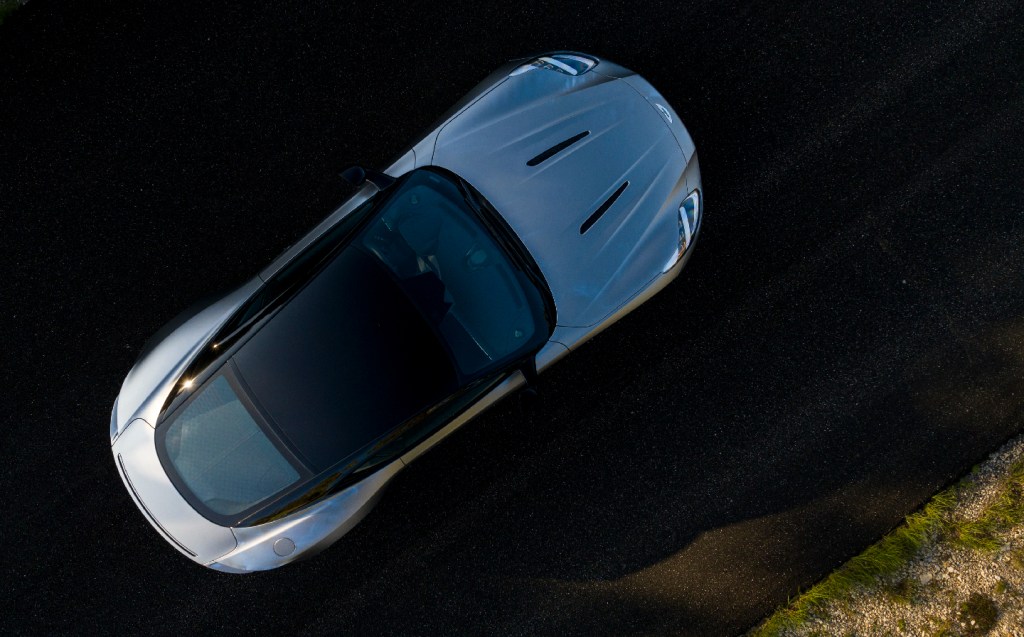
But actually the overall width is narrower thanks to a trick with the wing mirrors, which are now smaller and frameless — the whole unit swivels when adjusted, rather than the glass inside the housing, which makes them much more slender and attractive than before. Having a smaller mirror has the added benefits of reducing drag and improving visibility around the wings. One can only imagine how much it costs to replace one, though… well, until you need to actually do it and your bank manager gives you a call.
The wheels have grown in size versus DB11, with the DB12 now sitting on 21in rims (up from 20in), and two new finishes are available for them: Satin Bronze and Satin Platinum. These can be combined with seven new colours, and a glance at the configurator showed a huge number of options available in a range of hues; not just 50 shades of grey and silver.
The headlights are all new, with the jewel-like facet design created using by artificial intelligence for an optimum spread of light while ensuring they still meet strict regulations on lighting, we were told by designer Miles Nurnberger. Even he wasn’t sure how the technician programmed the algorithm but it involved punching numbers into a computer and a clever design was created. Regardless of the technical ins and outs, they look beautiful even glinting in the daytime sunlight, which must have been at least part of the consideration.
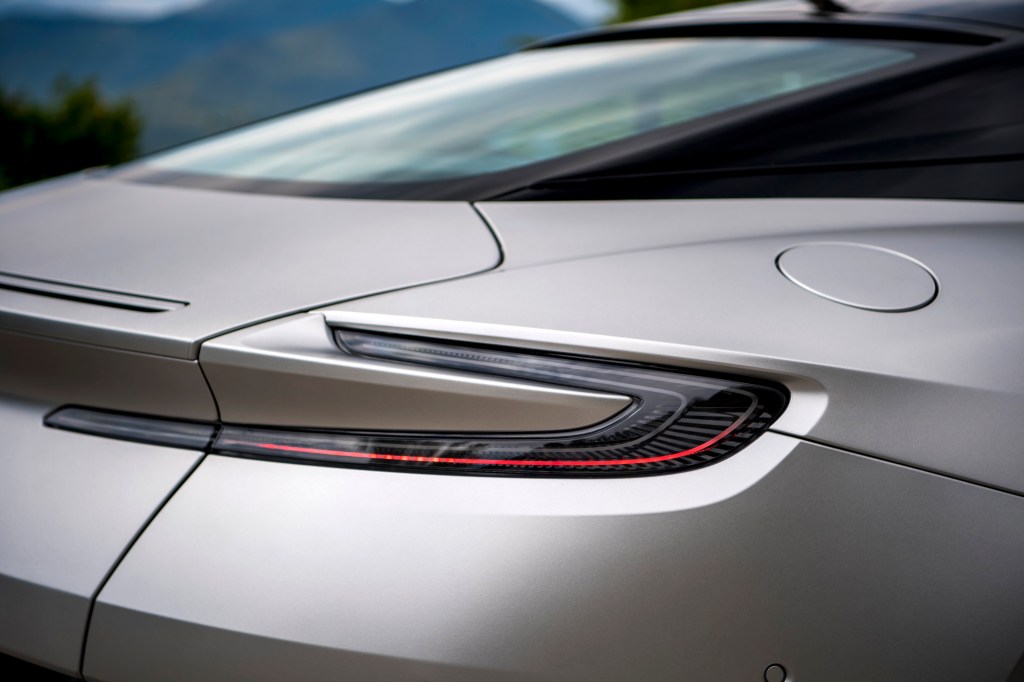
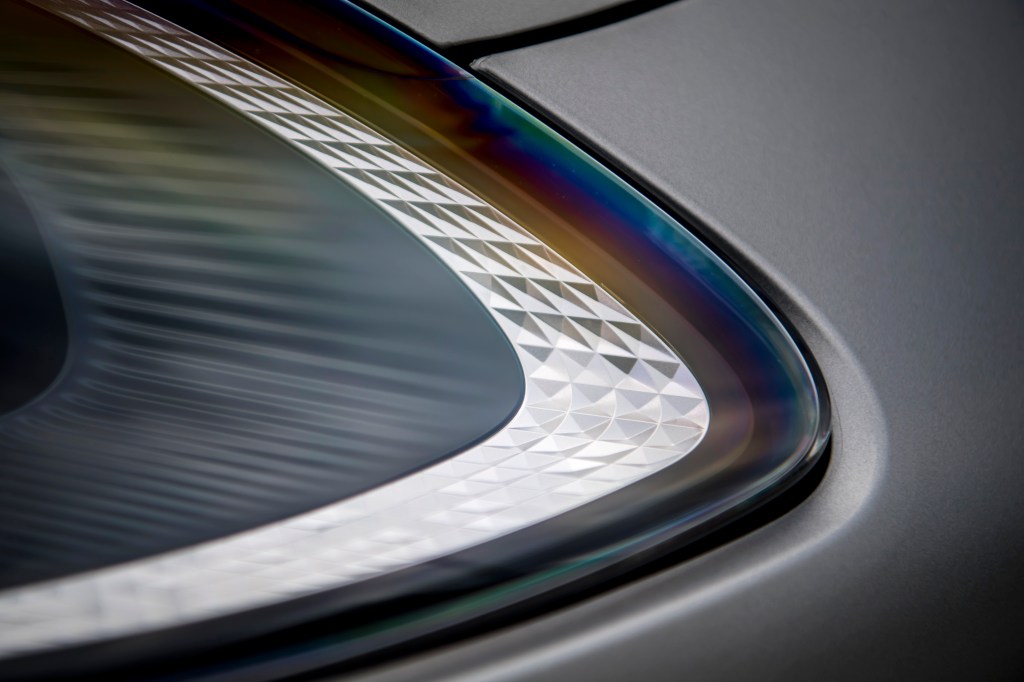
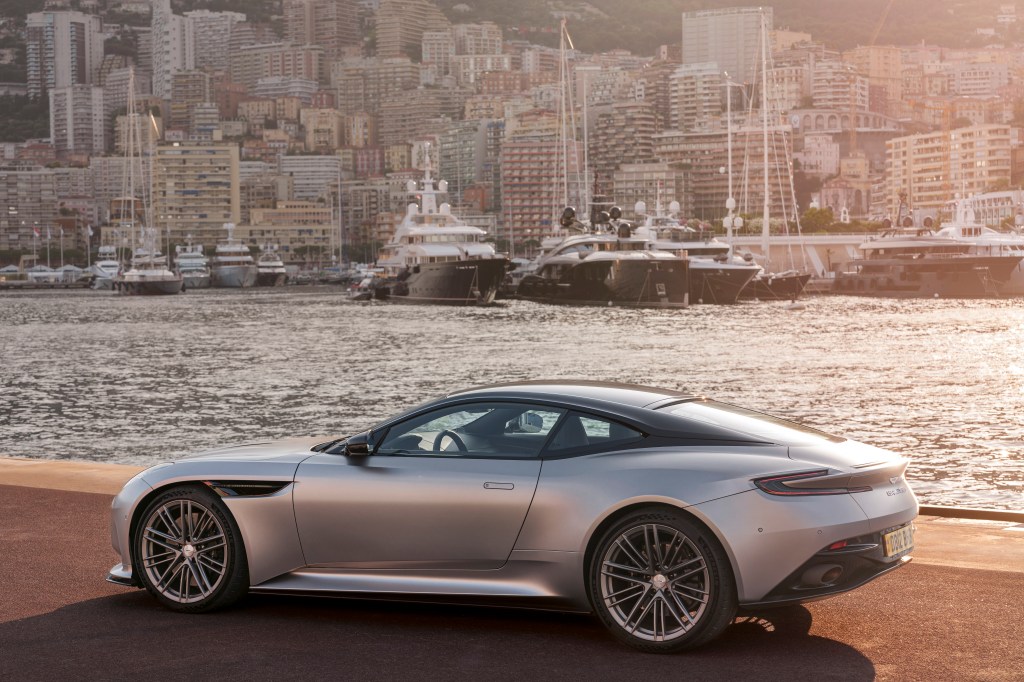
Round the side of the car, attention was paid to the painted elements and side strakes to make the car look more planted and improve the visual stance compared with the DB11, though the updates here are difficult to spot even for the trained eye.
And then we get to the rear of the DB12. Tellingly neither the press material nor Nurnberger during our walkaround mentioned the back end, and that’s because it’s basically identical to the DB11, right down to the LED lights and reflectors.
One has to assume this is for cost-saving reasons but it’s pretty shocking when you consider customers are paying upwards of £185,000, and anyone buying a DB12 will have to deal with a ribbing from friends at the golf club who’ll delight in saying your new pride and joy is no more than a facelifted DB11. At least it still looks pretty.
What will those friends be driving? Well rivals benchmarked by Aston Martin include the Porsche 911 Turbo, Ferrari Roma and Bentley Continental GT, though Aston would argue none offer the same mix of luxury and driving thrills, with the Bentley being too heavy and the Porsche and Ferrari not offering quite the same level of opulence.
Interior and technology
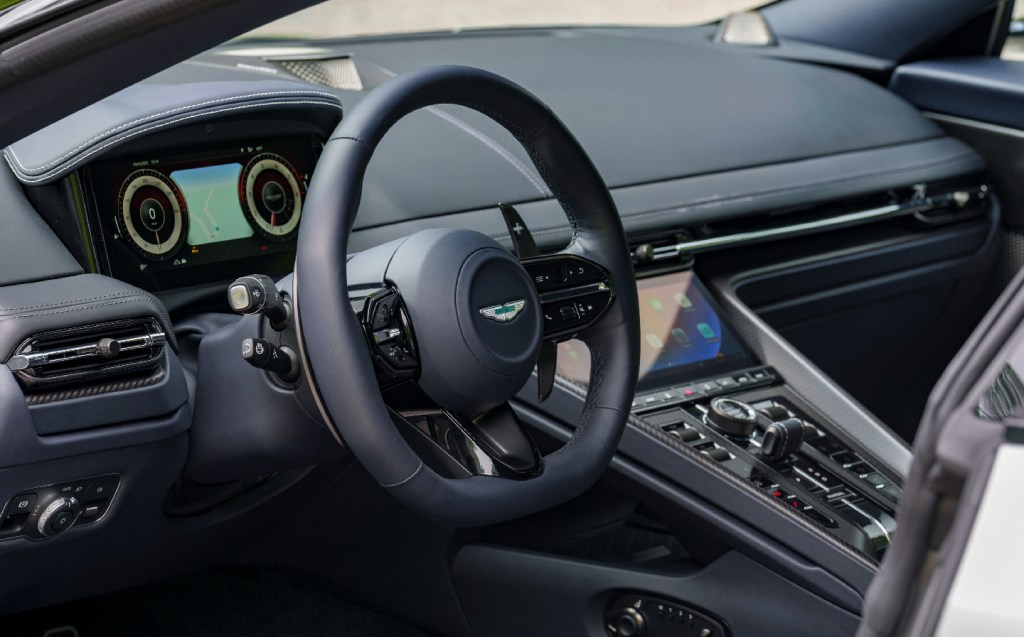
Open the door and you’ll see what I mean. No Aston could even be accused of lacking when it comes to materials or fit and finish (even the Toyota iQ-based Sygnet was relatively plush), but Aston has put a lot into making sure customers don’t climb inside the DB12 and feel shortchanged. It started by upping the team in charge of interiors from four people to sixteen as part of a round of significant investments at Aston, which has enabled a revolution to take place inside the car.
So we now get new quilting and materials, such as open pore wood and dark aluminium finishes, and the dashboard and waterfall centre console still feel like significant elements with the cabin (Nurnberger talks about retaining “mass”), increasing the feeling of being cosseted.
But more significantly Aston has spent a lot of time working out what physical controls customers want and what level of decluttering can take place. Importantly, while many carmakers are moving as many functions as possible onto the touchscreens, Aston has arrived at a sublime balance of physical and digital.
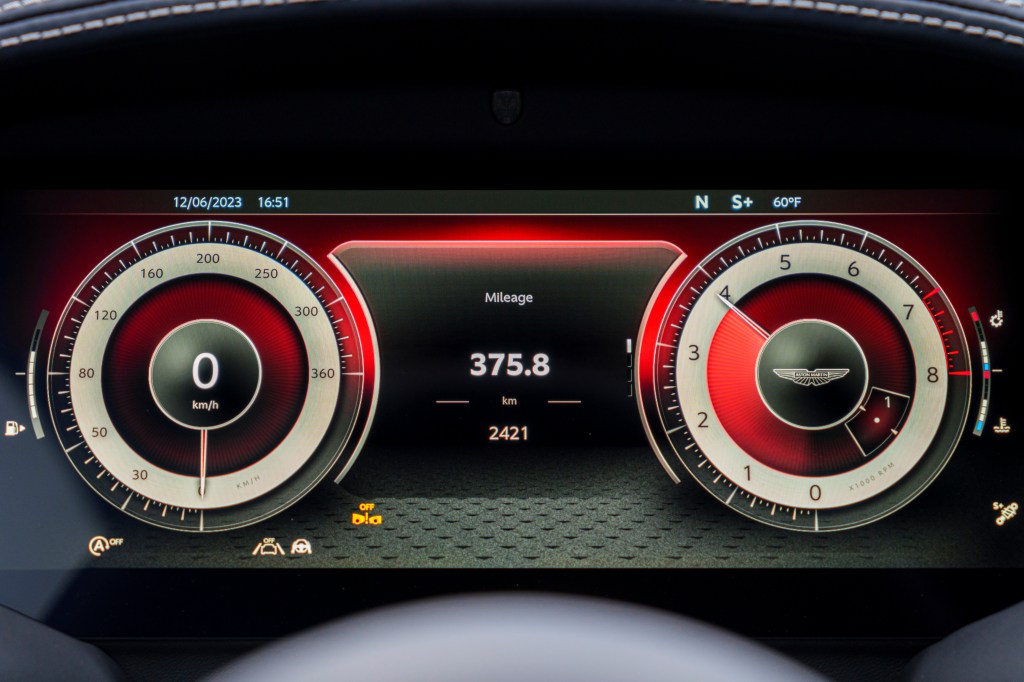
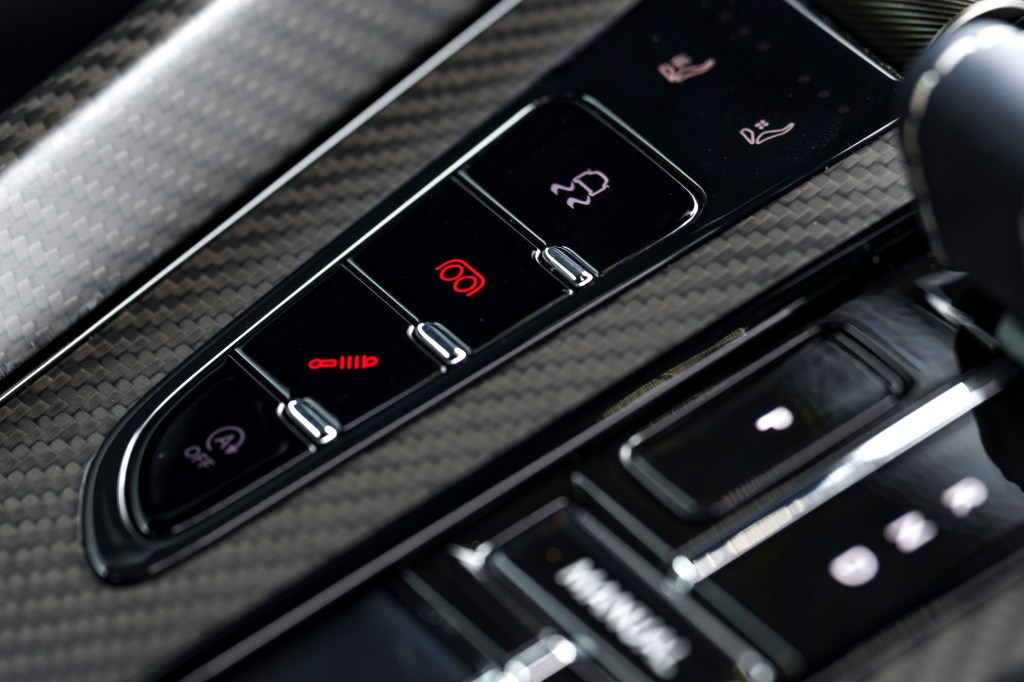
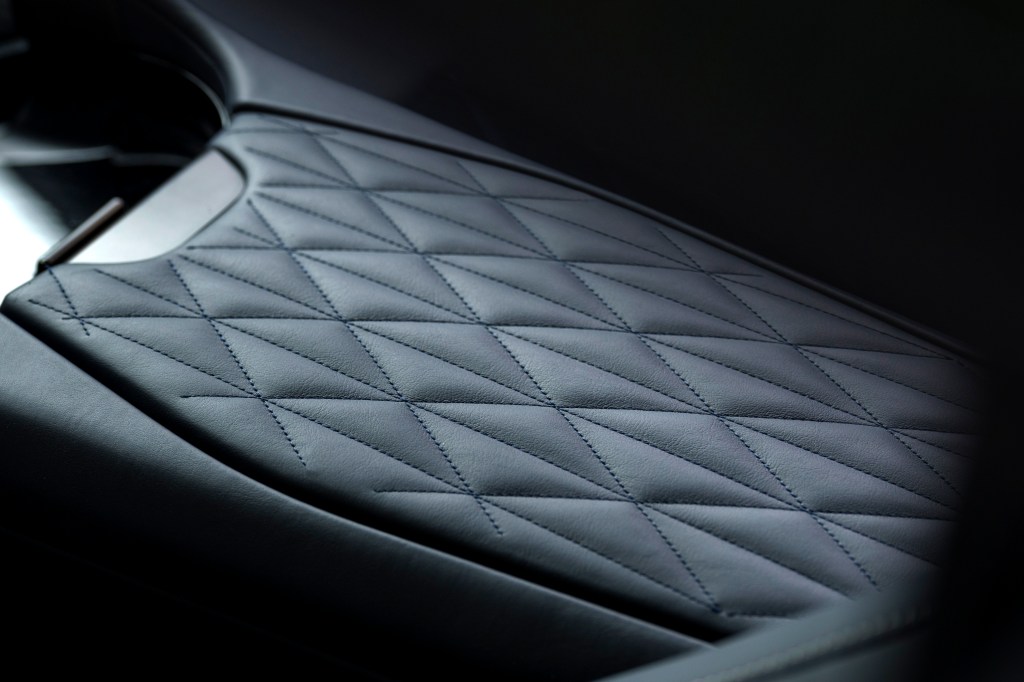
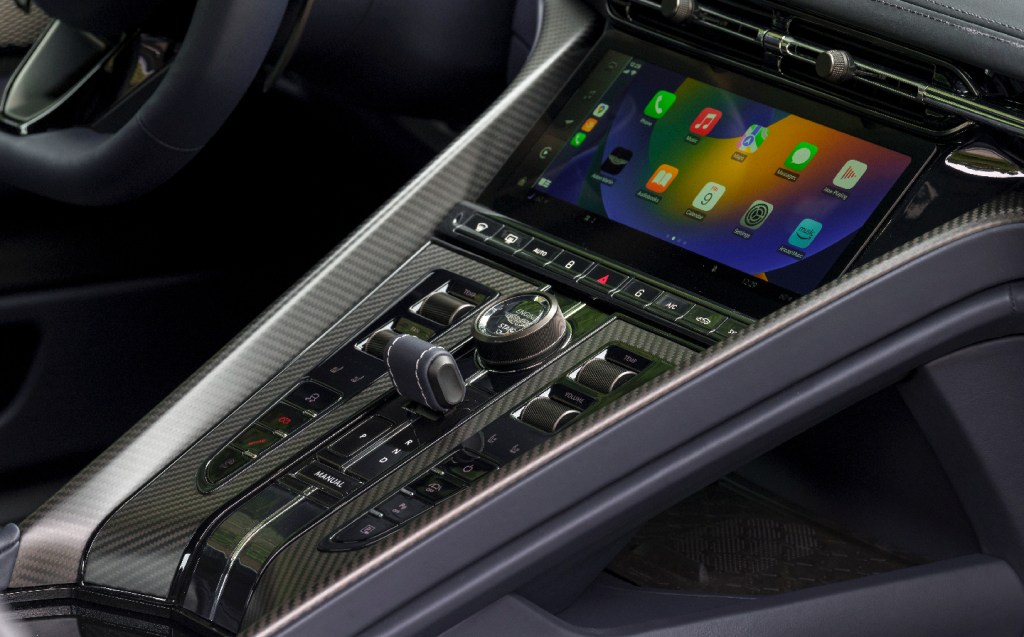
You still have push buttons for the likes of the windscreen demister and climate control, with dials for the temperature and fan speed, while the old dash-mounted buttons for Park, Reverse, Neutral and Drive have been replaced by a more logical drive selector toggle in the centre console. The whole thing just feels much more intuitive than before, but also a lot simpler to use than many rivals’ efforts.
But the biggest improvement is to the infotainment, with the DB12 being the first Aston to rip out the last-generation Mercedes tech (that the DBX’s infotainment screen isn’t touch-sensitive is extraordinary, frankly) and replace it with a bespoke, high definition HMI system. It looked good, responded quickly, included navigation with live traffic updates, now comes with an excellent Bowers and Wilkins stereo, and just felt a world away from the shoddy efforts of Aston’s recent past.
What’s more, we were told the system we were using was four over-the-air updates away from the version customers would be receiving when deliveries start this month. Hallelujah.
Engine and performance
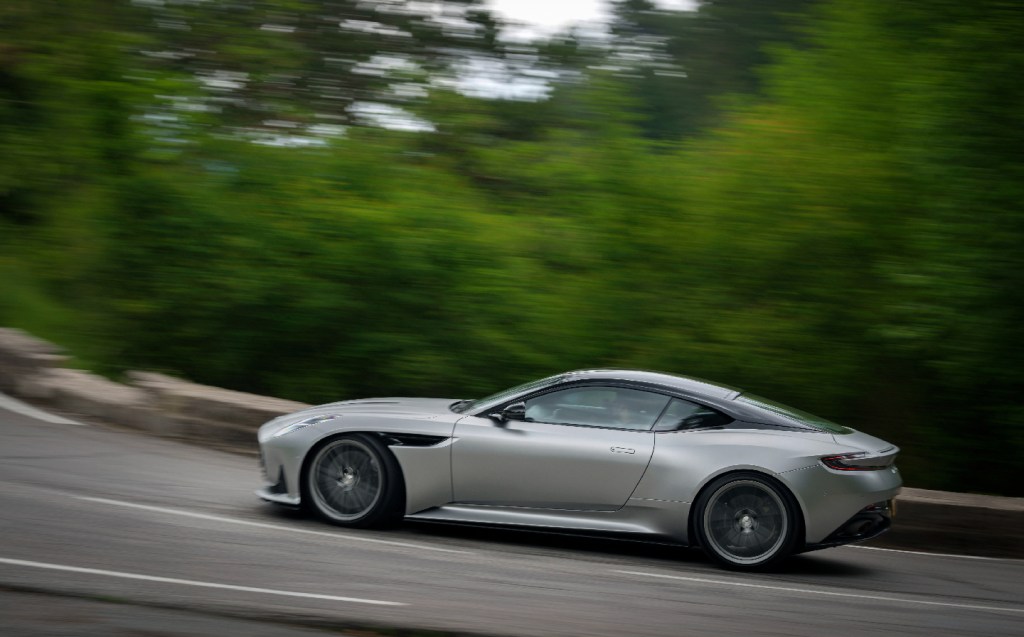
There were two main focuses in developing the DB12, Aston told us at the launch: increased luxury and increased performance. Of the two, the greatest amount of work went into the latter, and that starts with the engine.
The DB11 was launched with a V12 but Aston later introduced a version powered by a Mercedes-AMG V8 (the same unit found in the C63 S), and the DB12 is fitted with essentially the same block as before.
But it’s not the same engine by any means, with new director of vehicle performance Simon Newton (who can boast of having Lotus, Bentley and Williams F1 on his CV) explaining that his team went through a number of different combinations of turbochargers, inlets, cams, compression ratios, and more in order to find the right blend of performance and responsiveness for the DB12’s powerplant. Simply dropping in the same engine from DBX707, for example, would have just felt wrong in a GT car, he told us.
Newton then went into minute detail on the engineering of the car, showing us graphs with torque and power curves of DB12 versus DB11, and telling us all about improvements to peak longitudinal performance, honing of gear ratios and boosting of performance deltas. So much so that it began to feel like a briefing for a new Ferrari, which are notoriously jargon-heavy. I left the room with the clear impression that Aston Martin is really taking this stuff seriously now, and not simply dropping a Merc power unit between the front wheels and thinking “job done”.
Out on the road it’s difficult to say you really notice the 28 per cent extra power compared with DB11 (peak power is now 671bhp at 6,000rpm), and of course there’s no way to properly stretch the legs of a car like this without hitting a track, but the way the rev needle is able to whip up and down with vicious alacrity, especially when moving from GT into Sport or Sport Plus modes, and the way the torque continues to surge beyond 5,000rpm, where the DB11’s V8 began to run out of puff, makes it clear that the DB12 is a pretty different animal. One that enjoys being wrung out much more; an engine from which you can derive more pleasure when pushing it hard, and strumming the gearshift paddles.
And there’s an added sign that there’s more of a driver focus this time around: the ability to dial in traction control to suit the conditions, or your confidence level. There are now seven levels of slip possible at the rear wheels.
Aston reckons that as a brand, the DB12 moves it closer to the performance car marques such as McLaren and Ferrari, while also upping the luxury to take on the likes of Rolls-Royce and Bentley. The latter is wishful thinking but there’s reason not to scoff at the idea that Aston can now claim to be within touching distance of the more hardcore badges.
And it’s not all about the beefier powerplant, either.
Ride and handling
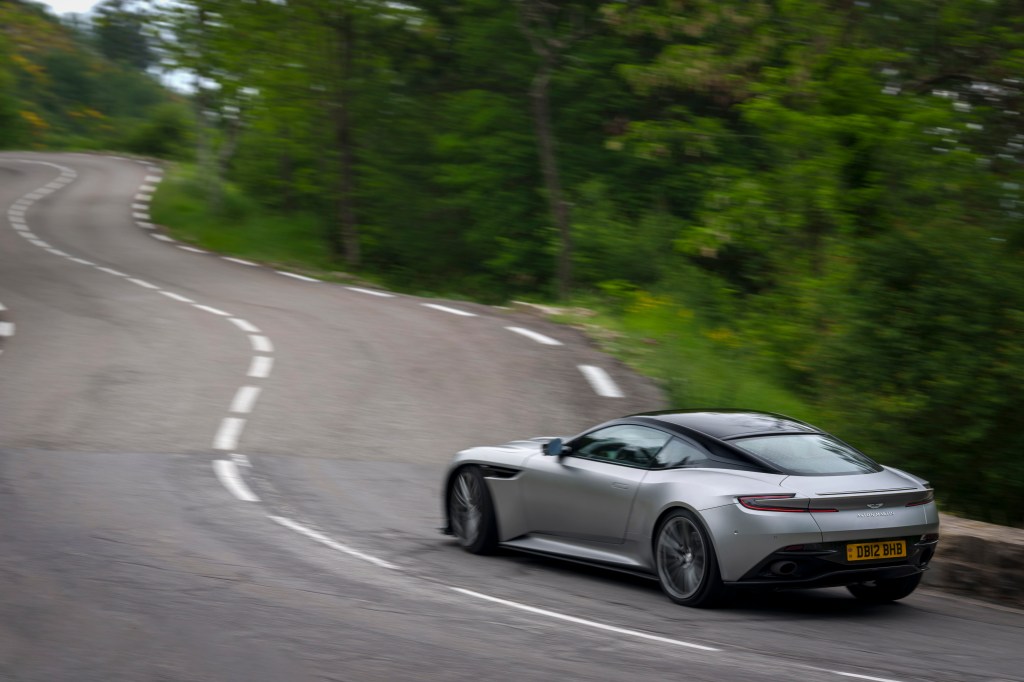
No carmaker would launch a new model and says its chassis has been made worse this time around, but the DB12’s updates are promising on paper.
For starters, the DB12 gets new Michelin PilotSport 5S tyres – the first application of this new rubber on a production car – and it offers a stiffer sidewall than on previous Astons.
From there the engineers worked to hone the vehicle dynamics and steering feel, and though the wheel itself is slightly too thick for my liking, there’s a natural feel and nicely-judged weight to the steering, with a linear turn-in and, importantly for a GT, as it takes the strain out of long-distance drives, a gentle keenness to return to dead centre.
The wheels are connected to the chassis via double wishbones at the front and multilink at the rear, with a five per cent increase in spring stiffness and slightly stiffer anti-roll bars, all connected to a stiffened chassis (with particular attention paid to stiffness in particular areas of the structure). Thanks to updated bushes all round and adaptive damping via Bilstein DTX units, there’s actually very decent comfort and composure over a wide variety of road surfaces, combined with reassuring stability when pushing hard across fast, twisty backroads.
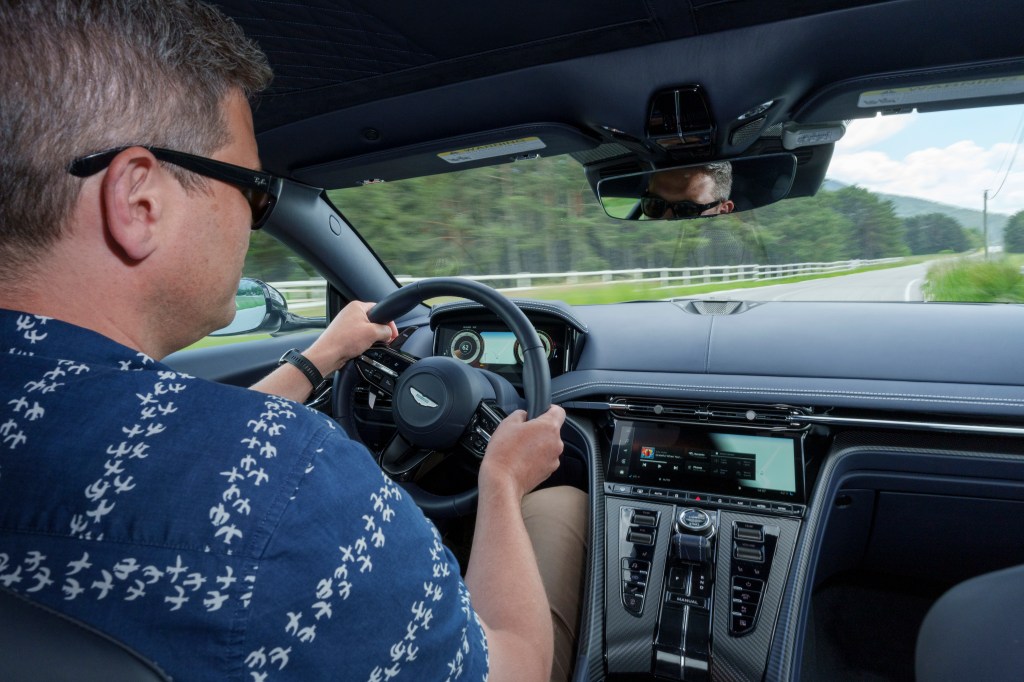
To be honest I was expecting more of an obvious difference in ride quality when switching between drive modes, with GT feeling softer and more pliant than Sport Plus, but in actual fact you don’t get that sense. Cruising at any speed in Sport Plus isn’t at all back-breaking, and when tip-toeing around you’d be hard-pressed to notice any difference at all.
But it’s the speed of response to shocks through the suspension that differs, so when really throwing the DB12 around you can feel the outside edge of the car resist load with more force, and there’s a general sense of increased alertness from the chassis. Aston claims the damping range is increased by 40 per cent over the DB11.
That’s all managed by a Bosch six-axis control unit, which can sense movements in each corner and manages everything from the e-diff to the integrated brake controller and traction control system to suit any given scenario within milliseconds. Newton told us he believes its the first application of such a sophisticated control unit in a production car, though we know that Ferrari fitted a similar six-way system to its Purosangue (working on a sublime bespoke active suspension system developed with Multimatic).
All you need to know is that it works well to deal with events such as a sudden loss of grip at one corner, or a big jolt through the chassis, and while we didn’t experience anything so dramatic during our test drive there was a sense or a couple of occasions that the DB12 would have your back, allowing you to concentrate on the business of getting quickly from corner to corner.
Pricing and on sale date
The Aston Martin DB12 is on sale now and deliveries will actually be starting this month (July). Prices start at around £185,000 but no buyer will get a base model, and with options you’d expect prices to nudge beyond £200,000 fairly easily.
Verdict: Aston Martin DB12 review
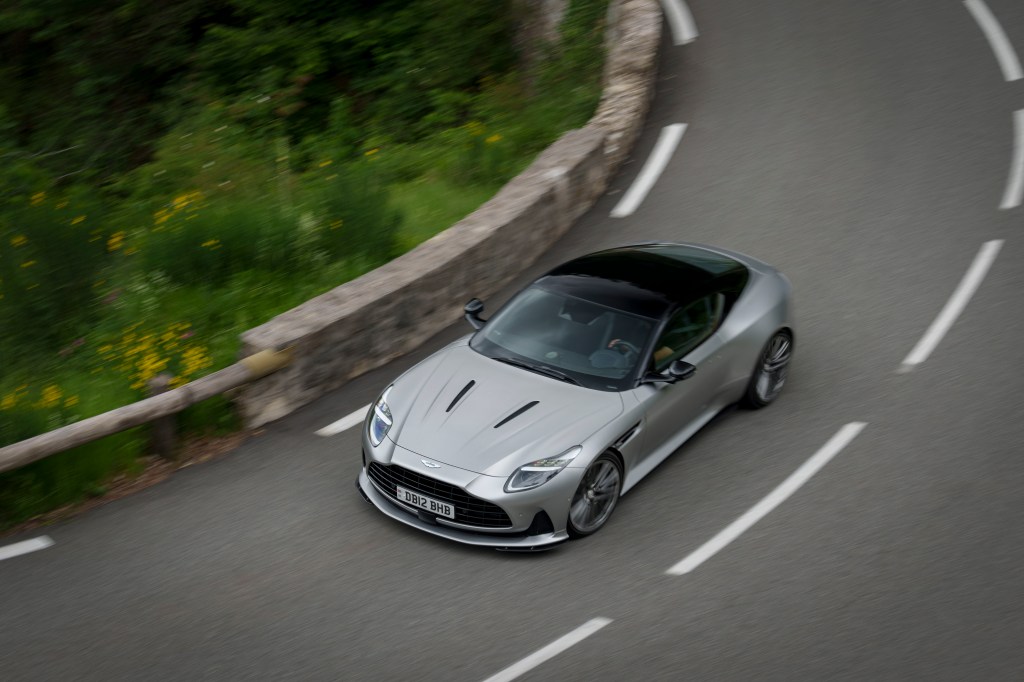
Aston Martin has invested heavily in facilities, staff and technology, and the DB12 is very obviously the first in a new era for the marque. Although the body looks very (very) much like the DB11, 80 per cent of the car is new and the extensive work that has gone into the responsiveness of the chassis has paid dividends — DB12 is sharper and more intense than the car it replaces, while retaining the comfort necessary for long distance journeys.
And the cabin is now up there with the best in its class, with the Merc cast-offs of previous Astons finally dumped in favour of bespoke, class-leading infotainment.
In short, this is not just a competent update in the DB series, it’s a complete revolution.
Follow @wdron Tweet to @wdronRelated articles
- If you enjoyed this review of the Aston Martin DB12, you might also be interested in our Aston Martin DBX707 on-track video review
- Also check out Peter Sellers’s Aston Martin DB4GT, which could sell for £2.6m at the Goodwood Bonhams auction 2023
- And don’t miss a look back at Jeremy Clarkson’s first ever review for The Sunday Times, which was of the 1993 Aston Martin Vantage
Latest articles
- Omoda 5 prototype review: Bargain family SUV is solid first effort for new Chinese brand
- Dacia Duster 2024 review: Rugged, affordable SUV modernised with electrification and quite the glow up
- Audi A3 Sportback 2024 review: Softly, softly, catchy premium hatchback buyer
- New electric-only Mini Aceman fills gap between Mini Cooper hatch and Countryman SUV
- Tesla driver arrested on homicide charges after killing motorcyclist while using Autopilot
- Porsche Macan 2024 review: Sporty compact SUV goes electric, but is it still the class leader for handling?
- F1 2024 calendar and race reports: What time the next grand prix starts and what happened in the previous rounds
- Aston Martin DBX SUV gets the interior — and touchscreen — it always deserved
- Nissan unveils bold look for updated Qashqai, still made in UK


